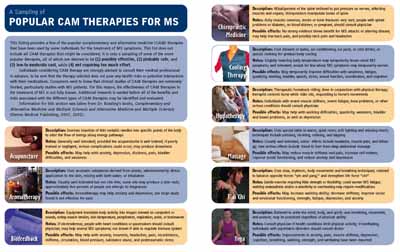Cover Story: Understanding Integrative Medicine
Some Physicians Combine Conventional Treatment Therapies with Complementary and Alternative Medicine to Provide Optimal Care
West Meets East…
A Western-Trained Doctor Evaluates and Integrates Eastern Therapies and Other Forms of Complementary and Alternative Medicine into MS Treatment Plans
Written by Susan Wells Courtney
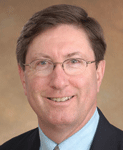
Dr. Allen C. Bowling is medical director at the Rocky Mountain Multiple Sclerosis Center in Englewood, Colorado, where he focuses on the use of CAM therapies and the treatment of multiple sclerosis (MS). As a student, Dr. Bowling was intrigued by medicine and science. His interest led him to earn an MD in medicine and a PhD in pharmacology from the Yale University School of Medicine. He went on to attend the University of California in San Francisco where he completed his training in neurology, and this was followed by his fellowship training at Massachusetts General Hospital and Harvard Medical School.
Seeing a possible connection, Dr. Bowling conducted research in the areas of diet, antioxidants, and neurologic disease. He has spent several years researching complementary and alternative medicine (CAM) therapies and how they may affect MS. He explains, “A good deal of gray area exists with the CAM therapies, however, some might be helpful, especially in treating neurologic conditions.”
Dr. Bowling continues, “The evidence supporting CAM therapies in the treatment of MS is limited. My driving force has been to get good information out to the patients, so they may make wise decisions when considering their treatment options. I am not trying to promote anything; I have no agenda beyond looking at the therapies available in order to provide a good and fair assessment.”

Given his extensive experience in the area of neurology and CAM therapies, Dr. Bowling speaks regularly and has given numerous educational programs on the topic to patients as well as medical professionals. He observes, “The patients want to know which CAM therapies are helpful, while the doctors want to know which CAM therapies are harmful.”
Dr. Bowling finds this dichotomy to be interesting, as it illustrates the two viewpoints that exist with these therapies. On the one hand, some CAM therapies show potential for treating individuals with MS, but on the other hand, these therapies are often lacking strong clinical evidence to support their effectiveness and safety. Clinical evidence refers to rigorous blinded studies conducted with people affected by the condition for which the therapy is being tested. Many times the evidence for CAM therapies is largely anecdotal (based on someone’s personal experience), which is the most controversial as well as the least reliable type of evidence.
The Search for Reliable Information
Most of the printed information on CAM therapies and MS doesn’t offer much benefit either. Dr. Bowling conducted a survey of 50 books which discuss the topic of MS and CAM therapies. He found that information in these books was frequently misleading, and in some instances, completely wrong – which could present a danger to individuals with MS looking to assess the potential value of a treatment.
“One common error found in these books,” Dr. Bowling notes, “is the assumption that since MS is an immune-system disease, treatments which activate the immune system would be of help. Since MS is actually a disease with an overly active immune system, increasing this activity could have a negative effect on an individual with MS, and may also have the potential to counteract the medications he or she is taking.”
To help medical professionals as well as the MS community acquire accurate information about CAM therapies and the treatment of MS, Dr. Bowling has authored two editions of his book, the first titled, Alternative Medicine and Multiple Sclerosis, and the second titled, Complementary and Alternative Medicine and Multiple Sclerosis (Demos Medical Publishing Inc., 2001 and 2007).
In his books, Dr. Bowling gives an overview of MS, providing many of the basic facts about the disease, to be sure that individuals reading about CAM therapies understand the MS disease process. He talks about who is most frequently diagnosed (young women), how MS causes injury to the nervous system (resulting from one’s own immune system attacking the myelin and nerves), typical symptoms (such as problems with vision, weakness, fatigue, depression, etc.), and conventional therapies (including all of the FDA-approved disease-modifying medications for MS).
The Placebo Effect and Psychoneuroimmunology
Dr. Bowling’s book describes the placebo effect and psychoneuroimmunology. The placebo effect refers to a patient who experiences an improvement from a treatment with no medicinal value. Dr. Bowling points out that a placebo effect may frequently result in a 30-to-40 percent improvement, with some improvement rates as high as 70 percent, in studies of various medical conditions.

Positive results of 60-to-70 percent improvements in early studies of MS (before any FDA-approved drug was available) were caused by the placebo effect, and may be at least partially attributed to the extra time the treating physicians were able to spend with their patients. Today, with doctors spending shorter times with their patients (10-to-20 minutes or less per visit), this placebo effect may be declining in clinical practice.
This is not true of CAM practitioners, who typically spend longer periods of time with their patients. One session of a therapy such as acupuncture, homeopathy, or massage may continue for a full hour or longer. This allows for more interaction and discussion between the doctor and patient, possibly increasing the success of the therapy through the placebo effect.
Studies of the placebo effect suggest that the mind can have a strong influence on a disease such as MS, affecting the behavior of the immune system. How can the mind affect the immune system? Researchers look to interactions between the nervous system and the immune system, a field of study known as “psychoneuroimmunology.”
Communications between the nervous system and the immune system occur through different actions. First, the brain affects hormone production, which in turn may affect the immune system; second, nerve fibers have connections with immune organs; and third, chemical messengers are used by both systems and appear to communicate messages and alter each other’s activities. This helps to explain why psychological and emotional issues such as depression, stress, and anxiety can affect one’s health and ability to function at his or her best. Conversely, individuals participating in spiritual or other uplifting activities may report improvements in their health and wellbeing.
Important Precautions and Planning
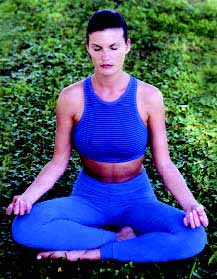
Important precautions about CAM therapies and MS are also included in Dr. Bowling’s books. He stresses that the information he provides is not a recommendation for using these types of therapies, and individuals need to do their own research and make their own decisions about treatment options. He advises that CAM therapies may be best considered when symptoms are mild or conventional therapies are not fully effective – but to only consider those therapies which are at least “possibly effective, probably safe, low-to-moderate cost, and do not require too much effort.”
Dr. Bowling advises individuals interested in using CAM therapies to make a plan, which would consider conventional medicine first; from there they should evaluate the reason to use CAM therapy, obtain accurate information about the therapy (including effectiveness, safety, cost, and effort involved); and finally, discuss this plan with their doctor. MS patients considering CAM therapies need to use caution and understand that most information about this type of treatment is incomplete, lacking in strong clinical evidence. He also warns not to confuse scientific evidence (from studies using test tubes and/or animals) versus clinical evidence (from studies with people).
Consumers need to recognize “telltale signs” of a CAM therapy that is unreliable. These include a “heavy reliance on testimonies [personal accounts]… strong claims using terms such as ‘amazing’ and ‘miraculous…’ a single therapy claimed effective for many conditions… a therapy’s composition that is ‘secret…’ a therapy with little or no information available… one that involves inpatient treatment, injections, or intravenous medications… or unwillingness of a CAM practitioner to cooperate with a physician.”
For a detailed explanation of how to find and evaluate claims about CAM therapies, MSAA has a monograph available on the topic. Titled, Thinking about Complementary and Alternative Medicine?, this booklet was coauthored by Thomas M. Stewart (director of programs & services at the Rocky Mountain Multiple Sclerosis Center) and by Dr. Bowling. To request a copy, please contact MSAA at (800) 532-7667, extension 129. A copy may also be viewed and downloaded at MSAA’s online publications center: www.mymsaa.org/publications/. For more information about the monograph, please see the inside back cover of this issue of The Motivator.
In his two book editions, Dr. Bowling provides valuable information on 40 types of CAM therapies – including such topics as acupuncture, chiropractic medicine, diet, exercise, herbs, massage, prayer, and t’ai chi – to name a few. A chapter is dedicated to each of these 40 types of therapies, which includes: a brief history and description of the therapy; the method for treatment; studies with the therapy in MS and other conditions; side effects (with warnings of potential negative effects); practical information (providing specifics about practitioners, costs, and insurance); a conclusion that summarizes the overall assessment of the therapy; and additional readings for recommended books on the topic.
The Five-Step Integrated Approach
Having provided a detailed evaluation of these 40 CAM therapies, Dr. Bowling continues by explaining how he works to integrate certain CAM therapy options with conventional treatments. In the second edition of his book, Dr. Bowling devotes a chapter to talking about the five-step integrated approach that is now being used at the Rocky Mountain MS Center for their clients.
“This approach is the best of both worlds,” states Dr. Bowling, “because it integrates conventional and unconventional types of treatments, using the best-available evidence to determine benefits. It also allows for each plan to be individualized for the patient’s particular personality, orientation, and needs, while treating both the underlying disease process as well as specific MS-related symptoms.
“Step one is to encourage patients to consider using one of the FDA-approved disease-modifying medications for MS. Step two provides a dietary approach, which includes avoiding saturated fats while increasing polyunsaturated fats. Studies suggest that this may have a mild disease-modifying effect in MS.
“Step three is a wellness approach and this is the most individualized of the steps. This considers the mind-body connection, the placebo effect, and who the person is in terms of personality and what they do spiritually. This approach offers hope-generating strategies and encourages personalization, empowerment, and optimism. Some may turn to religion and prayer, while others may turn to exercise for personal fulfillment. Unconventional exercise such as t’ai chi and yoga combine exercise with spirituality. Relaxation methods such as meditation and guided imagery, as well as psychotherapy for individuals with psychological issues, are also a part of this important step.
“Step four promotes exercise. Clinical evidence shows that exercise helps improve some of the symptoms of MS. These include physical benefits such as increasing strength and walking ability, while decreasing fatigue; and emotional benefits such as decreasing depression, anxiety, and anger. Exercise may be conventional, which may include working with a physical therapist or participating in hydrotherapy (water exercise); or unconventional, such as t’ai chi and yoga.
“Step five is huge. It is also the most complex. This is an integrative approach to symptom management. Treatment of MS symptoms is usually focused on using either conventional therapies or a particular CAM approach to treat the specific symptom. This integrative approach considers all reasonable conventional and unconventional treatments. This approach should be discussed with one’s healthcare provider, particularly when the two types of treatments are used in combination with one another.
“An interesting example is treating MS fatigue. Many conventional and unconventional therapies claim to be helpful. As part of this step, we go through all of the options. On some days, when fatigue is severe, it may make sense to use medication. A preventative measure is to exercise (as approved by one’s doctor), which has been shown to reduce fatigue. Caffeine in moderation is another reasonable option, as is cooling for individuals who are heat sensitive. Other potential treatments for fatigue may include certain dietary supplements, and uncommon exercise programs such as t’ai chi, and yoga.”
Dr. Bowling lists several other MS symptoms in this chapter, along with several potential conventional and unconventional therapies for each. Many CAM therapies are possibly effective for several symptoms. For instance, according to this listing, acupuncture may be useful in helping anxiety and stress, bladder problems, depression, pain, sleep problems, and weakness.
For More Information
Both editions of Dr. Bowling’s books include a summary of the effects of popular supplements, along with several groups of resources, listed under the various types of CAM therapies. Both editions are available for free loan through MSAA’s Lending Library program (please see page 64 for more information). Copies may also be purchased through retail book stores or websites, including Demos Medical Publishing, which may be found at www.demosmedpub.com. [Please note that MSAA does not profit in any way from the sales of these books, and does not recommend or endorse any particular product or service.]
Readers may also go to the Rocky Mountain MS Center’s website for more information and updates on CAM therapies and MS. This may be found by visiting https://www.mscenter.org/education/patient-resources/complementary-care/86-in-complementary-medicine/440-complementary-care. The Rocky Mountain MS Center offers a program to assist individuals with developing their own approach to integrative medicine. Individual 45-minute educational consultations with a trained staff member are available for a fee. For more information, please call (303) 788-4030, extension 103.
A Look to the Future
In the coming years, Dr. Bowling foresees an increase in research of popular integrative approaches for treating neurological conditions such as MS. Among others, one area that warrants further research is the study of antioxidants and how they may relate to neurological conditions. (In addition to supplements, antioxidants may be derived from many natural food items, including fruits, vegetables, and green tea.) Antioxidants are thought to act on “free radicals,” which are chemicals that can damage cells in the brain and other organs of the body.
According to Bowling, “Antioxidants could play an important role in the treatment of MS and other neurological conditions. Quite a bit of evidence supports a relationship between antioxidants and MS, as well as amyotrophic lateral sclerosis (ALS) and some of the illnesses related to aging, such as Alzheimer’s disease and Parkinson’s disease.
“Free radicals might also play a role, especially if the condition is more of a degenerative nature. MS has a degenerative component, but in many cases inflammation is involved.”
Dr. Bowling strongly warns that some antioxidants may activate the immune system, which could worsen one’s MS. “More research is needed to see how antioxidants affect MS, and if they may be helpful or harmful to the disease process. This is an active area of research, with a devoted research effort going on now with MS. We should know more in the coming years.”
East Meets West…
An Eastern-Trained Doctor Integrates Western Medicine with the Practice of Eastern Therapies in Treating MS
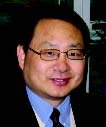
Dr. Jingduan Yang is the medical director at the Tao Institute of Mind & Body Medicine in Mt. Laurel, New Jersey. He is also a physician at the Jefferson-Myrna Brind Center of Integrative Medicine, which is a division of the Thomas Jefferson University Hospital in Philadelphia, Pennsylvania. Before completing a psychiatry residency at Thomas Jefferson University, Dr. Yang was a neurologist at the Fourth Military Medical University in China. He was also a research fellow in clinical psychopharmacology at Oxford University in England.
Dr. Yang specializes in neurology, integrative psychiatry, and Classic Chinese Medicine. In addition to writing numerous peer-reviewed articles on the topic of integrative medicine, he has been a speaker at many national and international conferences as well as academic meetings. At his practices in Pennsylvania and New Jersey, Dr. Yang integrates Chinese herbal medicine, acupuncture, neuro-emotional techniques, and psychotherapy in the care of his patients, while supporting their use of disease-modifying and symptom-management medications.
When asked about his motivation to become a physician, Dr. Yang responds, “I was born to a family that has a tradition of practicing Classic Chinese Medicine for generations. As a child, I observed my father treating patients with neurological conditions and mental illness using acupuncture and herbal medicine. In medical school, I was fascinated by the complexity of the mind, brain, and body interactions and interconnections. These were well emphasized and described in the Classic Chinese medical textbooks. I have found that my training in neurology, psychiatry, and Classic Chinese Medicine have served my patients very well for their conditions, which almost always require integrative approaches to address health and wellbeing in body, mind, and spirit.”
The Teachings of Classic Chinese Medicine and Energy Channels
 Dr. Yang explains that Classic Chinese Medicine addresses health on an “energetic level,” versus on a “biochemical or physical level.” These latter two levels are the modes for treatment with Western medicine and may be measured through laboratory testing and equipment. For example, identifying health problems on the biochemical or physical levels may be done through blood tests, ultra-sound, and MRI, because the conditions have reached a level where they have measurable changes in the body.
Dr. Yang explains that Classic Chinese Medicine addresses health on an “energetic level,” versus on a “biochemical or physical level.” These latter two levels are the modes for treatment with Western medicine and may be measured through laboratory testing and equipment. For example, identifying health problems on the biochemical or physical levels may be done through blood tests, ultra-sound, and MRI, because the conditions have reached a level where they have measurable changes in the body.
Dr. Yang continues, “Classic Chinese Medicine teaches that health issues do not happen overnight, but rather begin at very deep levels, affecting a patient on an energetic level,” Dr. Yang notes. “This ancient medicine describes the human body as having energy channels – also known as meridians – and these channels are connected with specific organs in the body, which serve as energetic centers. For instance, the body has a liver meridian, a gall bladder meridian, and so on. Problems at an energetic level begin with changes that have not yet manifested on a biochemical or physical level, so they are not measurable by modern equipment or laboratory tests. There are also many different energy levels, in which energy named ‘chi,’ a form of life force, flows.”
Dr. Yang points out that learning about the body’s “energetic level” can be confusing for anyone who is not familiar with the concept, and practitioners of Classic Chinese Medicine need years of study to understand how the body works on this level. Learning how to evaluate a patient’s energy stages is equally complex, and to a certain extent, is an art. This type of medicine is based on the body as a “whole;” meaning that on an energy level, the mind and body work in unison and cannot be separated.
A doctor who practices Classic Chinese Medicine must know what questions to ask to determine which energy channels are affected. “For instance,” Dr. Yang continues, “when someone is having headaches, the doctor must find out which part of the head is hurting. Different locations of pain are connected with different energy levels and different energy centers.
“If the pain is temporal, possibly a migraine headache, I look at the gall bladder and liver channels, as there must be other manifestations. So I will ask questions that relate to these channels. I ask if the patient is experiencing depression (an emotional symptom) or having trouble making decisions (a mental symptom). I will also ask if the patient is having physical symptoms such as those of fibromyalgia, chronic fatigue syndrome (CFS), irritable bowel syndrome (IBS), gastroesophageal reflux disease (or GERD), and if he or she is having any dizziness or vertigo. These additional symptoms denote problems along the energy channels relating to the liver and gall bladder. By asking such questions, I am able to identify the area and nature of the problem.
“Another example is someone with MS who is experiencing problems with bladder control. When I see a patient with this symptom, I ask about his or her memory and ability to concentrate. I also ask if he or she has ringing in the ears, hearing loss, sleep problems, lower back pain, knee pain, or sexual dysfunction. The answers will help me to identify if energy problems are occurring within the kidney and bladder meridians.”
The Teachings of Classic Chinese Medicine and Diagnostic Techniques
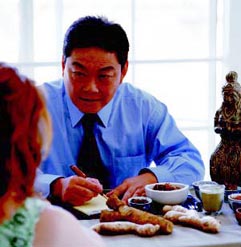 During an evaluation, two types of diagnostic techniques are used, and these are unique to Classic Chinese Medicine. The first technique looks at the patient’s tongue. The physical appearance (including the color, shape, thickness, puffiness, and coating) provides details about a patient’s health. By looking at these different features, the doctor can determine the status of blood circulation and energy, digestion and metabolism, and whether someone is sick.
During an evaluation, two types of diagnostic techniques are used, and these are unique to Classic Chinese Medicine. The first technique looks at the patient’s tongue. The physical appearance (including the color, shape, thickness, puffiness, and coating) provides details about a patient’s health. By looking at these different features, the doctor can determine the status of blood circulation and energy, digestion and metabolism, and whether someone is sick.
The tongue also carries a message of the whole body. Portions of the tongue refer to different organs. For example, the front-third of the tongue relates to the lung and heart; the middle-third relates to the stomach and spleen; the back-third relates to the bladder and kidneys; and the sides relate to the liver and gall bladder.
The second type of diagnostic technique is performed by reading the patient’s pulse. “With Classic Chinese Medicine,” explains Dr. Yang, “six pulses are found on each side of the body. The doctor uses three fingers to read these pulses. On each side, the doctor feels three ‘superficial’ pulses, and detects each one with a different finger. Then by pressing harder and releasing slightly, the doctor can feel three deep pulses. This procedure is performed on both the left and right sides of the body.
“These pulses relate to different organs and energy levels, revealing how well each is functioning. Reading these pulses is not just a case of counting the beats and this technique requires many years of practice. The doctor not only feels how fast and strong each pulse is beating, but also the rhythm, the shape (if ‘wide’ or ‘thin’), and even the tension of the pulse – which may be like the tight strings of an instrument or the loose layers of an onion.”
Integrating Western Medicine with Classic Chinese Medicine
 While Dr. Yang practices both acupuncture and Chinese herbal medicine, he also supports the use of disease-modifying and symptom-management medications for individuals with MS and other neurologic conditions. He states, “Many neurological conditions, including MS, have manifested beyond the energetic level to the physical and biochemical levels, where modern medicine can be very helpful.
While Dr. Yang practices both acupuncture and Chinese herbal medicine, he also supports the use of disease-modifying and symptom-management medications for individuals with MS and other neurologic conditions. He states, “Many neurological conditions, including MS, have manifested beyond the energetic level to the physical and biochemical levels, where modern medicine can be very helpful.
“Acupuncture and Chinese herbal medicine are both treatment modalities in Classic Chinese Medicine, a medical system that deals with the human being at an energetic level, in contrast to physical and biochemical levels of modern medicine. Therefore, it complements modern medical treatment very well. MS is one of those conditions that require integrative intervention from both Western and Eastern approaches, addressing physical, social, emotional, and spiritual wellbeing. Acupuncture and Classic Chinese herbal remedies are major components of the Eastern healing arts.” [Western medicine is also commonly referred to in the United States as “traditional,” “conventional,” or “modern” medicine.]
Chinese Herbal Medicine
“Chinese herbal medicine uses energetic agents rather than chemical agents; it goes into energetic channels after it is absorbed,” explains Dr. Yang. “Chinese herbal remedies are medicine rather than food; it should be used based on an evaluation of the energy status of an individual. Frequent re-evaluations should be conducted as the status can change after treatments. Following each evaluation, the herbal remedies are strategically formulated with individual herbs that fall into one of four categories: treating major problems (disease process), treating accompanying issues (symptoms), minimizing possible side effects, and directing the herbal energy to the targeted parts of the body. So when it is used properly and is based on a good evaluation, it rarely has side effects or interferes with a patient’s medications.”
Dr. Yang notes that herbal formulas are customized for each individual. “They work through a synergy of all the ingredients, each one harmonizing with another. In some instances, a single chemical element may be harmful, but when mixed with numerous others, it becomes detoxified. If used properly, these can be very safe, but finding the right doctor can be challenging. There is no clear-cut certification for a doctor prescribing herbal formulas.” The success of this type of treatment is dependent on an accurate evaluation of the patient and the combination of ingredients that have been customized for that individual.
Herbal formulas may be taken as pills (that have been prepared in advance according to common energetic patterns), from a concentrated powder made into a soup or tea (which is more potent and individualized, but requires motivation since these herbs have an unpleasant smell and taste), or by cooking with the raw herbs. This latter method is mostly done in China and can give off a strong smell throughout the house.
[Editor’s note: While Eastern medicine relies heavily on the practice of Chinese herbal medicine, Western medicine has yet to thoroughly evaluate its practice in the treatment of MS through rigorous clinical studies. Herbal formulas are very complex and include numerous substances. As with any change to one’s treatment plan or routine, readers are advised to discuss any new medications or therapies with their family doctor or neurologist in advance.]
Acupuncture, A Tool in Classic Chinese Medicine
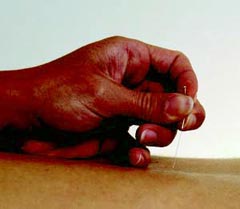 Dr. Yang continues, “Acupuncture is also an energetic intervention based on the Classic Chinese medical evaluation of energy status. It taps into very complicated energetic centers and their networks, producing a powerful modulation that rebalances the energy status responsible for our health and wellbeing.
Dr. Yang continues, “Acupuncture is also an energetic intervention based on the Classic Chinese medical evaluation of energy status. It taps into very complicated energetic centers and their networks, producing a powerful modulation that rebalances the energy status responsible for our health and wellbeing.
“Acupuncture is a tool in Classic Chinese Medicine, and the acupuncture I practice is based on all of the theoretic frameworks that are the foundation of the Classic Chinese medical system, including the theories of yin/yang and many others. The selection of the acupuncture points along with the combination of these points is an art of healing. Additionally, the refined technique of manipulating needles is crucial to delivering the desirable results.” Once again, the success depends upon the knowledge and ability of the physician selected.
“In MS patients, case reports and clinical studies show that many areas can be improved through acupuncture and Chinese herbal medicine. These improvements may include: increased motor and sensory function; reduced numbness, tingling and pain; improved bladder control and sexual function; reduced anxiety and depression; increased energy; and better sleep. Overall, such therapies can help improve the quality of life for individuals with MS.”
The Future of Integrative Medicine
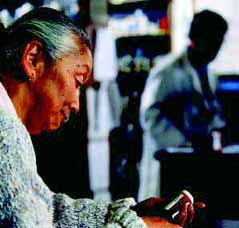 “In China, many medical professionals now take advantage of both Western and Classic Chinese Medicine,” Dr. Yang explains. “At times, the treatments in China are much more integrated. For instance, every hospital has a section devoted to traditional Chinese Medicine, while other sections offer modern medicine and technology. A patient receiving an IV infusion of antibiotics or steroids may also receive herbal extractions via IV along with these medications.”
“In China, many medical professionals now take advantage of both Western and Classic Chinese Medicine,” Dr. Yang explains. “At times, the treatments in China are much more integrated. For instance, every hospital has a section devoted to traditional Chinese Medicine, while other sections offer modern medicine and technology. A patient receiving an IV infusion of antibiotics or steroids may also receive herbal extractions via IV along with these medications.”
Dr. Yang notes that doctors who practice Western medicine now recognize how things like lifestyle and stress can affect one’s health, and how other parts of the body can affect one another. These doctors may now view the mind-body connection as being more valid, and recent studies are starting to look at spiritual types of influences, such as yoga and prayer. As Western medicine continues to evolve, it becomes closer to Eastern medicine, while Eastern doctors become more supportive of Western medicine. Perhaps the day may come when the two schools of thought become one.

